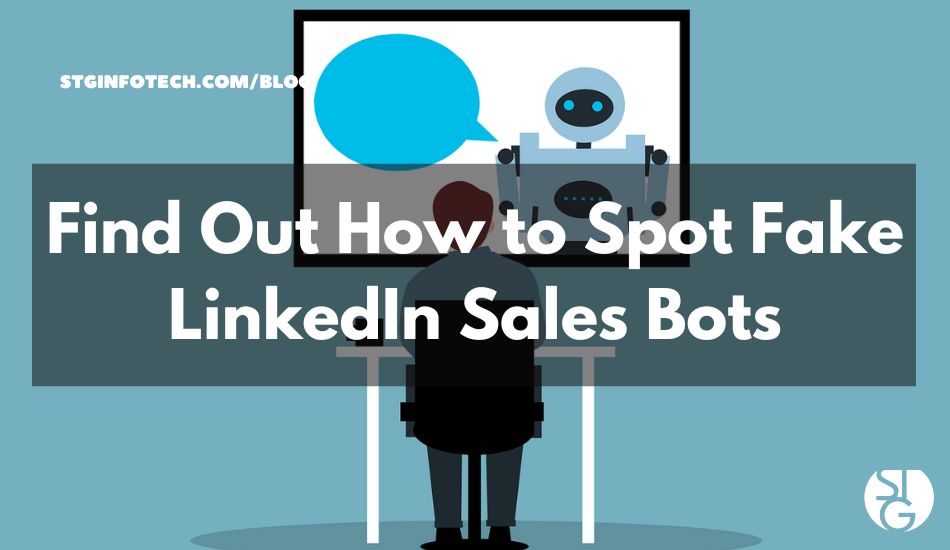LinkedIn is developing into an invaluable resource for professionals. People use it to network, connect, and look into business opportunities. But several red flags have appeared as it grows in popularity. The number of fake sales bots is increasing, and we want to help. Find out how to spot fake LinkedIn sales bots.
These bots pose as real users in an effort to exploit unsuspecting people. This is one of several scams on LinkedIn. The FBI claims the fraud on LinkedIn is a “serious threat” to all platform users.
Let’s look into the world of fake LinkedIn sales bots and examine their tactics to provide you with valuable tips. You’ll learn to recognize these bad actors and protect yourself. In order to create a safer LinkedIn experience, it’s important to stay alert and maintain awareness.
How to Spot Fake LinkedIn Sales Connections
Scams on social media often prey on emotion. Who doesn’t want to be seen as special or interesting? Scammers will connect alongside a message that makes someone feel wanted. And people often accept these requests without looking at a person’s profile.
On top of that, adding a business proposition makes it even easier to trick people. Those who are seeking employment or a business opportunity are more likely to put their guard down. There’s a natural trust given to other business professionals. More people trust a LinkedIn request verses a Facebook one.
So, how can we determine which are fake and real requests? Here are some pointers for spotting the bots and scammers.
Empty Profiles and Generic Images
Fake sales bots on LinkedIn often don’t take the time to complete a full profile. They will add very little information or nothing at all. Usually lacking comprehensive work histories and educational backgrounds. These bots will also use generic profile pictures from stock photos.
If a profile looks too good to be true or lacks specific information, it’s time to raise a red flag. Real LinkedIn users typically give a good amount of information about themselves. They do so to build trust with their connections and develop credibility.
Generic and Impersonal Messaging
Messaging is often the easiest ploy used by fake sales bots. They send out generic and impersonal messages to the masses. There usually won’t be any references to your profile or industry. They employ generic scripts to be able to interact with as many potential targets as possible.
Real LinkedIn users will customize their messaging to the person they are trying to connect with. They’ll bring up a recent post, mutual connections, or subjects unique to your industry. Proceed with caution if you come across any message that seems excessively generic. Be sure to check out someone’s profile too before communicating further.
Overly Promotional Content and Unrealistic Statements
Fake LinkedIn sales bots are notorious for spamming people. They will send you tons of direct messages with lots of advertising material and exaggerated claims. These bots will aggressively promote products or services. Typically without providing much useful information.
They might promise an amazing return on investment, overnight success, or quick fixes to challenging issues. On LinkedIn, real professionals prioritize building relationships over promotion. They make the effort to have an insightful conversation and offer commentary as an alternative to promoting themselves.
Relationships based only on selling should be avoided. Especially those that don’t offer any meaningful content or engagement.
Poor Spelling and Grammar
When communicating on LinkedIn, look out for messages with poor grammar and inconsistent spelling mistakes. You might dismiss an error sent by an international speaking connection, but it could also be a bot.
Misspellings and bad grammar are common among fake LinkedIn sales bots. These mistakes can be a dead giveaway that the sender is not who they claim to be. The ability to communicate effectively is a source of pride among LinkedIn users. They make an effort to uphold a high degree of professionalism.
Be wary if you come across messages that have multiple spelling and grammatical mistakes. Look closely at messages before responding to a sender.
Unusual Connection Request and Profiles
Fake LinkedIn sales bots will randomly approach people with connection requests. They will target users without considering their common or relative professional interests.
Reject any connection requests from profiles that are unfamiliar to you. If they have nothing to do with your industry or area of expertise, red flag.
Take the time to look into a person’s profile in detail. Look into why they would connect with you, and judge how relevant their content is. Legitimate LinkedIn users most likey have something to connect with you over. They will only reach out to people in their professional network or with similar interests.
Need Online Security Training?
It’s important to be able to recognize fake LinkedIn sales bots in order to maintain a safe online experience. You can protect yourself from being scammed.
Scams are becoming more sophisticated as a result of AI. It’s a good time to get help sorting through the real and fake. It’s also beneficial to educate your employees on social media security.
Do you need help with team or personal cybersecurity training? Our experts can help you become more informed about spotting scams.
Call us today to schedule a conversation.
If you’d like to learn more about what’s new in the tech world, follow our blog!
Click here to schedule a free 15-minute meeting with Stan Kats, our Founder, and Chief Technologist.
STG IT Consulting Group proudly provides IT Services in Greater Los Angeles and the surrounding areas for all your IT needs.





